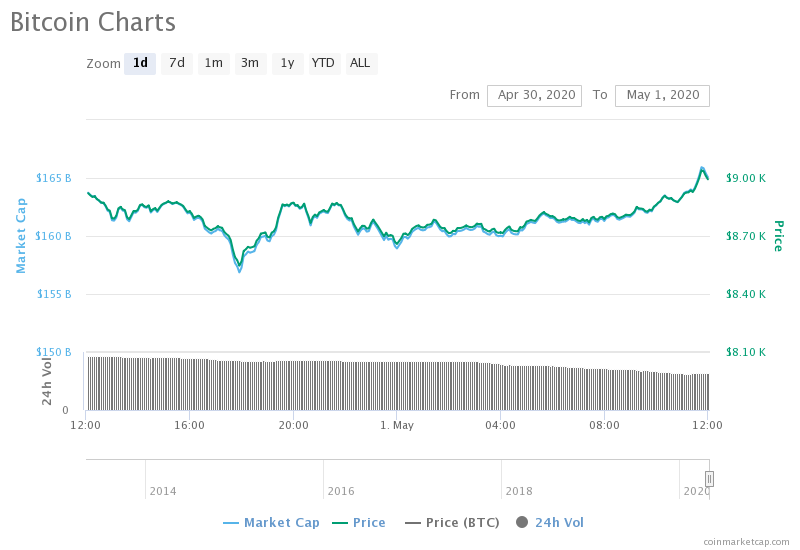Content

Annuity contracts have a number of standard variants, including deferred, fixed, immediate, or variable. Administrative floatFloat resulting from the time it takes to administratively process checks or other related paperwork. Total elapsed time for processing checks can range from less than a day to more than a week.
Non-call protection typically pays the full margin in the first year and a few of points in the subsequent years. It reduces the likelihood of a borrower conducting a sale, refinancing or repricing during that period and gifts investors a pay out if they do. If you owe more on your home than it’s currently worth, you’re upside down on your mortgage. This can happen if property values suddenly drop or you miss several mortgage payments. While it’s not an ideal situation to be in, there are options.
The borrower pays the principle back in regular payments, i.e., in installments. The contract specifies when to make the payments and how much they should be. A number of sponsors are viewing non-call positions in a positive light, especially on portfolio companies that are negatively hit by Covid-19. With very little chance of being able to refinance or reprice, it ensures liquidity is locked in when they announce negative business performance in the second and third quarters. If you can answer «yes» to all of these questions, then the FHA Reverse Mortgage might be right for you.
You use your home as collateral when you borrow money and “secure” the financing with the value of your home. This means if you don’t repay the financing, the lender can take your home as payment for your debt. On loans with term call provisions, the bank will review your financial information to decide if it wants to continue.
What does it mean to use my home as collateral?
More advanced account reconciliation services combine electronic data provided by the customer with the bank’s records to reconcile completely the account and list all outstanding items. AccelerationMaking demand for payment in full for a debt that has not yet matured. Usually a remedy provided in a loan document for the lender to use in the event of default by the borrower. Also known as «at call money» or «money-at-call,» call money is any loan that is payable in full immediately on demand by a bank.
Information contained herein has been obtained from sources believed to be reliable, but are not assured as to accuracy. There is neither representation nor warranty as to the current accuracy of, nor liability for, decisions based on such information. No part of this material may be reproduced or referred to in any form, without express written permission of Guggenheim Partners, LLC.

Generally, as long as you stay under that credit limit, you can borrow as much as you need, any time you need it, by writing a check or using a credit card connected to the account. Many HELOCs have an initial period of time — a draw period — when you can borrow from the account. After that, you might be able to renew the credit line but if not, you will probably have to start repaying the amount due — either the entire outstanding balance or through payments over time. HELOCs generally have variable interest rates and payments so the rates and payments can go up or down over time.
Insurance
Attrition analysisEvaluation of the reduction in the amount of an asset or liability held. For example, an analysis of the reduction in savings account balances caused by withdrawals over time. Annual percentage yield (APY)A precisely calculated measure of yield paid on a bank deposit account. Allowance for doubtful accountsA reserve for accounts receivable that may not be collectable. The allowance is always shown as a reduction from gross receivables used to calculate net receivables.

As an alternative to a security agreement physically signed by the debtor, the 2000 amendments to the UCC provide for an authenticated security agreement. Asymmetric behaviorUnbalanced behavior exhibited by financial instruments, the rates or values of which do not change in proportion to changes in market rates. For example, increases in the prime rate quickly reflect most or all of increases in prevailing interest rates, while decreases in the prime rate are slow to reflect decreases in prevailing interest rates. (3) Securitized commercial (non-consumer) obligations not secured by real estate are typically called collateralized debt obligations or CDOs.
Credit, Loans, and Debt
If the lender doesn’t claim the money or property within 20 days, you can keep it. During this three-day waiting period, the lender cannot directly or through another person take action related to the loan. The lender can’t deliver the money for the loan (other than in escrow), or begin performing services. If you’re getting a home improvement loan, the contractor can’t deliver any materials or start work. The lender can begin to accrue finance charges during the delay period. If multiple options fit your situation, try out scenarios and ask lenders to provide several quotes so you can see which type offers the best deal overall.
Guggenheim Funds Distributors, LLC is an affiliate of Guggenheim. Carl Carabelli has been writing in various capacities for more than 15 years. He has utilized his creative writing skills to enhance his other ventures such as financial analysis, copywriting and contributing various articles and opinion pieces. Carabelli earned a bachelor’s degree in communications from Seton Hall and has worked in banking, notably commercial lending, since 2001. Although you’d save $1,311.36 a month by selecting a 30-year mortgage instead of a 15-year, you’d still be paying an extra $193,628.40 more in interest over the course of the loan.

There is no required minimum line of credit advance amount for a variable rate advance and no limit on the number of variable advances. All advances are subject to available credit and can only be made up to your approved credit limit. Guggenheim’s approach to investing in CLOs is consistent with our process for all our fixed-income investments.
What Does Call Money Mean?
Often, attachment alone is not sufficient to establish the priority of the creditor’s interest relative to the interests of other creditors. Asian optionAn option whose payoff is based upon the average value of an underlying over a specified period of time. Also see American option, European option and Bermuda option. Arbitrage freeA type of financial model that generates market scenarios excluding scenarios that provide arbitrage opportunities. (3) In municipal finance, the specific practice of investing funds obtained at a tax-preferred low rate of interest in higher-yielding investments until the funds are needed for the purpose intended.
Accordingly, to the extent that loans are written with payment terms and maturities that reflect the borrower’s cash flow stream, the cash flow to the bank from loan principal payments is the source of bank liquidity. See commercial loan theory of liquidity and shiftability theory of liquidity. (2) Liquidation of a loan or security by means of periodic reductions. Mortgage loans and securities usually have level payments of principal and interest. For such amortizations, the interest consumes most of the early payments and, therefore, principal amortization increases as the loan ages.
Jobs and Making Money
As-extracted collateralOil, gas, or other minerals that are subject to a security interest that is created by a debtor having an interest in the minerals either before or after extraction. A security interest can also include accounts arising out of the sale at the wellhead or minehead of oil, gas, or other minerals in which the debtor had an interest before extraction. A category of personal property collateral defined by the 2000 revisions to Article 9 of the UCC. AppraisalA statement or estimate of the market value of tangible personal property or real estate. Under the federal appraisal regulations for real estate pledged to secure loans, the term «appraisal» refers to a statement of market value that meets the five specific standards. AnnuitiesContracts that guarantee income, often for an individual’s lifetime, in exchange for a lump sum or periodic payment.
You get the loan for a specific amount of money and it must be repaid over a set period of time. You typically repay the loan with equal monthly payments over a fixed term. If you don’t repay the loan as agreed, your lender can foreclose on your home. Revolving accounts are another type of personal loan and may include credit call loans meaning cards or lines of credit. You’re usually required to make minimum monthly payments on a revolving account, but again, lenders don’t typically have the ability to demand immediate repayment of the debt like they do with call loans. Call loans are “callable,” meaning lenders can demand or “call” repayment at any time.
- Know that legitimate lenders will give you time to review the terms of the offer in writing and want you to understand them.
- If you have a higher-priced mortgage, the CFPB has additional information about your rights.
- For example, after taking out a personal loan, your lender may require you to pay $500 per month for six years.
- Or they may be unsecured, which means you don’t have to put up any assets to guarantee the loan.
- Typically, the funds must be returned if the transaction is canceled or if the recipient of the advance fails to provide the goods or services.
But this compensation does not influence the information we publish, or the reviews that you see on this site. We do not include the universe of companies or financial offers that may be available to you. Secured loans can also be home equity loans or home equity lines of credit.
Investments are integrated into portfolio strategies by considering relative value, risk, and sector targets, as well as the risk-adjusted return potential evaluated from a long-term holding period point of view. Thus, the relative value determination for a CLO simultaneously considers potential returns relative to other securitized and corporate fixed-income sectors as well as its pricing relative to other short-duration options. CLOs are also subject to a variety of collateral concentration limits that seek to limit risk in the bank loan collateral pool and protect CLO investors from loss. Examples of these limits include requirements for industry diversification in the underlying pool of bank loans, and exposure to non-senior secured loans and single obligors. There are also limitations on the amount of CCC-rated loans that can be included in the underlying collateral pool, which helps contain overall default risk. Your monthly payments are more likely to be stable with a fixed-rate loan, so you might prefer this option if you value certainty about your loan costs over the long term.
Any estimates based on past performance do not a guarantee future performance, and prior to making any investment you should discuss your specific investment needs or seek advice from a qualified professional. These are yardsticks used to assess a borrower’s ability to repay the debt, and can include the borrower’s situation as well as general economic factors. Most US lenders use the FICO Score when determining whether to approve an application. One of the most common loan payment types is the fully amortizing payment, where a loan is paid off with regular or periodic installments. A wet loan is a mortgage loan in which the lender releases the funds early. The lender releases the money before the parties have completed the paperwork.
First, rating agencies now require that CLOs feature substantially more overcollateralization than their pre-crisis counterparts. Second, whereas pre-crisis CLOs were able to make meaningful investments in subordinated bonds and other structured credit instruments, post-crisis CLOs are collateralized almost exclusively by senior secured bank loans. Due to their enhanced collateral and structural improvements, CLO 2.0s experienced even better performance than CLO 1.0. The past decade’s ultra-low interest rate environment increased investor appetite for the attractive risk-adjusted returns that can potentially be secured through direct lending. This competition has enabled companies with weaker balance sheets to borrow and to offer fewer investor protections when doing so. For example, leverage multiples of five to six times EBITDA have become more commonplace even for firms with EBITDA under $20 million.